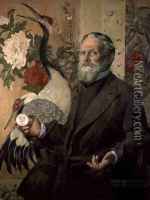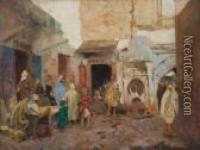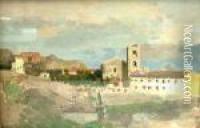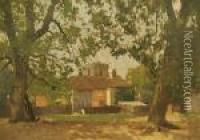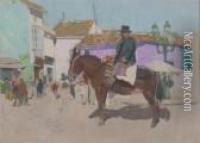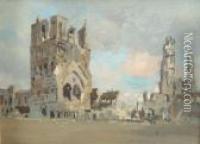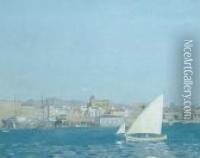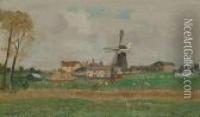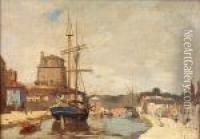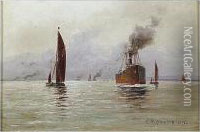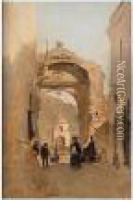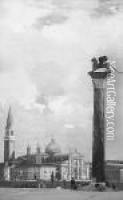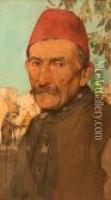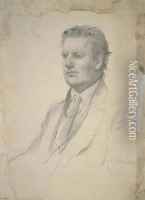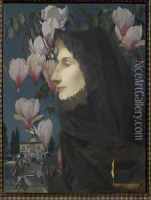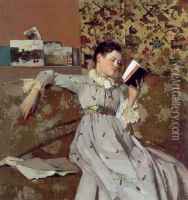James Kerr-Lawson Paintings
James Kerr-Lawson was a Scottish painter and muralist born on August 23, 1862, in Fife, Scotland. Initially starting his career in the field of decorative painting, Kerr-Lawson soon developed a passion for fine arts. His early education in the arts began at the Edinburgh College of Art, where he cultivated his skills in painting and drawing.
After his studies in Edinburgh, Kerr-Lawson moved to London, where he was influenced by the burgeoning art scene. He furthered his education at the Académie Julian in Paris, a popular art institution of the time which attracted many aspiring artists from around the world. There, he was exposed to the works of French Impressionists and other contemporary movements, which would have an impact on his evolving style.
Kerr-Lawson's body of work encompasses a variety of subjects, including landscapes, portraits, and historical scenes. His style was noted for its realistic portrayal and attention to detail, often reflecting the influence of his travels and exposure to European art movements. He was also known for his mural works, which were commissioned for various public and private spaces.
One of Kerr-Lawson's most significant contributions was his involvement in the decoration of the Canadian Senate at the turn of the 20th century. He was commissioned to create murals for the Senate Chamber in Ottawa, which are considered some of his most important works. These murals reflect his ability to blend historical narrative with artistic expression, capturing moments from Canadian history.
Throughout his career, Kerr-Lawson exhibited his work at various institutions, including the Royal Academy in London. His paintings were also showcased in international exhibitions, allowing him to gain recognition beyond the borders of the United Kingdom.
James Kerr-Lawson's legacy as an artist is marked by his dedication to his craft and his contributions to public art through his murals. His works are held in several collections, and his murals continue to be admired for their historical significance and artistic merit. He passed away on November 7, 1939, leaving behind a body of work that continues to be appreciated by art historians and enthusiasts alike.
